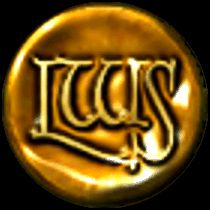Re: Brackets and the Invention of CSS
dorayme wrote:
Absolutely, many web designers would love to be able to use
attribute-based selectors. Also, the use of square brackets for
attribute-based selectors is consistent with the notation used in XPath.
dorayme wrote:
In article <4d20a$4747a6f9 $40cba7b4$15326 @NAXS.COM>,
"Jonathan N. Little" <lws4art@centra lva.netwrote:
>
>
So... are you are implying perhaps that it was anticipated that
the square brackets would have been used more often?
"Jonathan N. Little" <lws4art@centra lva.netwrote:
>
>dorayme wrote:
>Square brackets are for attribute selectors. A useful but not often used
>feature because of IE.
>>Is there some particular reason that the inventors of CSS chose
>>to leave us with the legacy of the curly brackets (for which one
>>has to shift press) rather than the square (for which one simply
>>has to press)?
>>>
>>p [margin: 0;]
>>>
>>is two key presses shorter then
>>>
>>p {margin: 0;}
>>>
>>Multiply that by a few billion over the world of css, taking in
>>to account a lot of consequences including the bigger chance of
>>typos and revisions, the greater expenditure of energy on people
>>and processors, more wear and tear on the keyboard.
>>>
>>to leave us with the legacy of the curly brackets (for which one
>>has to shift press) rather than the square (for which one simply
>>has to press)?
>>>
>>p [margin: 0;]
>>>
>>is two key presses shorter then
>>>
>>p {margin: 0;}
>>>
>>Multiply that by a few billion over the world of css, taking in
>>to account a lot of consequences including the bigger chance of
>>typos and revisions, the greater expenditure of energy on people
>>and processors, more wear and tear on the keyboard.
>>>
>feature because of IE.
So... are you are implying perhaps that it was anticipated that
the square brackets would have been used more often?
attribute-based selectors. Also, the use of square brackets for
attribute-based selectors is consistent with the notation used in XPath.



Comment